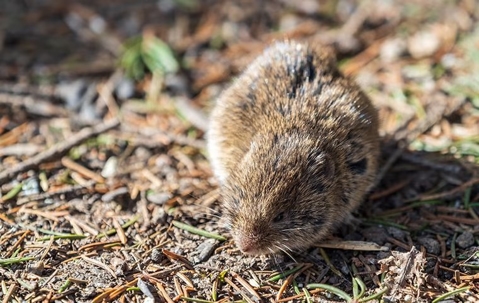Effective Vole Control Solutions: Taking Care Of Vole Pest Issues
Grasping Vole Parasite Control: Comprehensive Insights on Invasion Avoidance and Therapy Techniques
By acknowledging the refined signs of vole problem early on, we can take proactive actions to stop extensive damages. In this discussion, we will certainly discover the nuances of vole habits, dig into the recognition of infestation indicators, and uncover the most effective prevention and therapy techniques.
Recognizing Vole Actions
Examining the foraging patterns of voles offers beneficial understandings into their behavior and environment choices. Voles, little rodents resembling computer mice, are herbivores recognized for their below ground tunneling activities. By observing their foraging behavior, researchers can gain a better understanding of where voles choose to establish their habitats and the extent of their environmental effect. Voles are prolific breeders, with a solitary women efficient in generating numerous clutters in a year, making it essential to comprehend their behavior for effective parasite control strategies.
Study shows that voles exhibit careful feeding habits, favoring seeds, roots, and bulbs. This dietary choice influences their foraging patterns, leading them to locations abundant in vegetation and ground cover. Additionally, voles are recognized to produce fancy passage systems for foraging and nesting functions, indicating a high level of versatility to their environments.
Understanding vole habits is important for executing targeted bug control actions that disrupt their environment preferences and foraging activities (vole yard damage). By examining their actions, experts can create much more effective avoidance and treatment methods to manage vole problems

Identifying Indications of Vole Problem
Vole invasions can be found by identifying details signs of their presence in an area. One of the most typical indicators of a vole problem is the visibility of surface runways.
Another essential sign of vole invasion is the existence of tiny burrow openings in the ground. Voles dig superficial burrow systems with numerous entries and leaves. These burrows act as shelter and nesting sites for the voles. Additionally, voles are known to leave behind chewed plant stems, origins, and light bulbs near their burrow openings, indicating their feeding activity in the area.
Furthermore, vole droppings can also represent their existence. Vole droppings are tiny, brown, and cylindrical fit, resembling grains of rice. Locating these droppings along runways or near burrow openings can verify a vole infestation. By being attentive for these indicators, residential property owners can immediately resolve vole infestations and prevent further damages.
Carrying Out Aggressive Avoidance Steps

In review addition, using all-natural vole deterrents like castor oil-based repellents or killer urine can serve as efficient precautionary steps. It is also advisable to routinely inspect exterior areas for any indicators of vole task, such as runways or burrow openings, to attend to potential invasions promptly. vole control. By taking on these proactive prevention strategies, property owners can significantly minimize the likelihood of vole damage and keep the health and aesthetics of their landscapes
Efficient Therapy Strategies
Integrating targeted capturing approaches and making use of approved rodenticides are vital parts of effective treatment methods for taking care of vole infestations. Trapping can be an effective means to reduce vole populations, particularly when put purposefully in their energetic runways. Snap traps and live catches can both work, with the latter permitting the capture and moving of voles. When using rodenticides, it is important to follow safety guidelines to stop injury to non-target pets and animals. Location rodenticides in safe lure terminals to decrease threats to unplanned targets. Additionally, habitat alteration, such as decreasing ground cover and getting rid of resources of food, can assist hinder voles from infesting an area. Normal surveillance and maintenance are likewise key elements of effective treatment methods to guarantee that vole populaces are maintained under control. By integrating capturing, rodenticides, habitat alteration, and constant surveillance, effective vole insect control can be attained.
Tracking and Maintenance Tips
Routine monitoring allows for the very early discovery of vole task, enabling prompt intervention prior to invasions aggravate. To effectively keep track of vole populaces, purposefully placed traps can be utilized in vole runways or near burrow entries.
In addition, maintaining a clean and clean landscape is important in vole avoidance. Clearing away particles, such as piles of timber or dense vegetation, eliminates prospective vole habitats. Frequently cutting and cutting lawns greenery helps lower vole concealing areas and reduces their access to food resources.
In addition, recurring maintenance of physical barriers, such as fencings or check my blog cable mesh, is important to prevent vole intrusion. Inspecting and fixing any type of damages to these frameworks makes certain that vole control stays effective in guarding residential or commercial properties from infestations. By incorporating these surveillance and maintenance practices right into an extensive vole pest control strategy, individuals can properly handle vole populaces and safeguard their residential or commercial properties from damages.
Final Thought
In conclusion, understanding vole bug control needs a strong understanding of vole habits, the ability to recognize indicators of invasion, carrying out positive prevention measures, effective therapy techniques, and regular tracking and maintenance. By taking a detailed method to vole control, individuals can efficiently take care of and protect against invasions, ultimately securing their building and surrounding environment from damage brought on by these tiny rodents.
In this discussion, we will certainly discover the nuances of vole actions, dive into the recognition of infestation signs, and uncover the most reliable prevention and therapy approaches.Integrating targeted capturing approaches and utilizing authorized discover here rodenticides are crucial components of reliable therapy strategies for handling vole problems. To efficiently check vole populations, tactically put traps can be made use of in vole paths or near burrow entryways. Inspecting and fixing any damages to these structures ensures that vole control continues to be efficient in guarding properties from problems. By incorporating these tracking and upkeep practices into a thorough vole bug control plan, people can effectively handle vole populations and secure their buildings from damages.